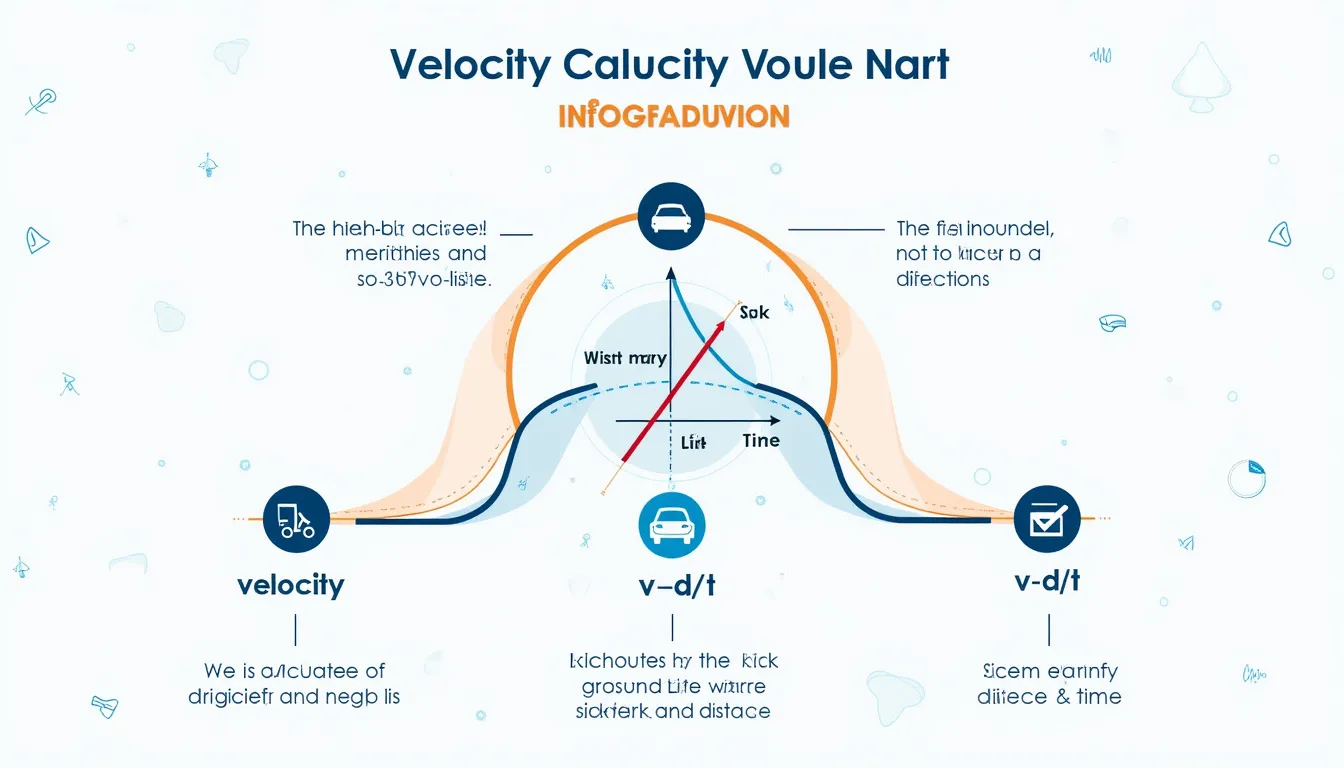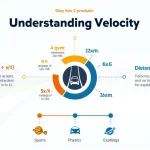Velocity Calculator
Is this tool helpful?
How to use the tool
Solve any straight-line motion problem in four quick steps:
- Select what you need: Velocity, Distance, or Time.
- Enter the known values—for example:
- Velocity task: distance = 900 m, time = 120 s.
- Distance task: velocity = 3.2 m/s, time = 250 s.
- Time task: distance = 1 500 m, velocity = 6 m/s.
- Choose “Calculate”.
- Read the answer; it appears below, rounded to two decimals.
Formulas behind the tool
- Velocity $$ v = rac{d}{t} $$
- Distance $$ d = v \times t $$
- Time $$ t = rac{d}{v} $$
Worked examples
- Velocity: 900 m ÷ 120 s = 7.50 m/s.
- Distance: 3.2 m/s × 250 s = 800 m.
- Time: 1 500 m ÷ 6 m/s = 250 s.
Quick-Facts
- Uses SI base units—metre, second, metre per second (SI Units – NIST, https://www.nist.gov/pml/weights-and-measures/si-units).
- Built on uniform linear-motion equations (OpenStax Physics, 2022, https://openstax.org/books/physics/pages/2-3-time-distance-and-displacement).
- Displays two-decimal accuracy per ISO 80000-1 guidance (ISO 80000-1, 2019).
- Free online access, no registration (Tool homepage, 2024).
- Typical highway limit ≈ 27.8 m/s (WHO Global Road Safety Report, 2018).
FAQ
What variables can I solve for?
You can find velocity, distance, or time by supplying the other two; the tool rearranges the basic motion equation v = d/t to do so (OpenStax Physics, 2022).
Which units should I enter?
Enter metres, seconds, and metres per second—the International System of Units mandated by the Bureau International des Poids et Mesures (BIPM, 2019).
Can I use decimals such as 2.75 s?
Yes. Any positive decimal is accepted; the parser blocks values ≤ 0 to avoid division errors and non-physical magnitudes.
Why are negative numbers disallowed?
Negative signs indicate direction and require vector treatment; this calculator reports magnitudes only (Serway & Jewett, 2020).
Does the tool handle acceleration?
No. It assumes constant velocity; accelerated motion needs kinematics like $$d = v_0 t + \frac{1}{2} a t^2$$ (Giancoli, 2021).
How precise are the answers?
Outputs round to two decimals, matching typical introductory-lab precision and keeping rounding error under 1 % for most inputs (ISO 80000-1, 2019).
How do I convert m/s to km/h?
Multiply by 3.6—e.g., 5 m/s × 3.6 = 18 km/h (NIST Unit Converter, https://www.nist.gov/pml/metric-conversion-table).
Who benefits from this calculator?
Students verify homework, engineers estimate process timing, and coaches track athlete speeds without manual math (EducationWeek, 2022).
Important Disclaimer
The calculations, results, and content provided by our tools are not guaranteed to be accurate, complete, or reliable. Users are responsible for verifying and interpreting the results. Our content and tools may contain errors, biases, or inconsistencies. We reserve the right to save inputs and outputs from our tools for the purposes of error debugging, bias identification, and performance improvement. External companies providing AI models used in our tools may also save and process data in accordance with their own policies. By using our tools, you consent to this data collection and processing. We reserve the right to limit the usage of our tools based on current usability factors. By using our tools, you acknowledge that you have read, understood, and agreed to this disclaimer. You accept the inherent risks and limitations associated with the use of our tools and services.







